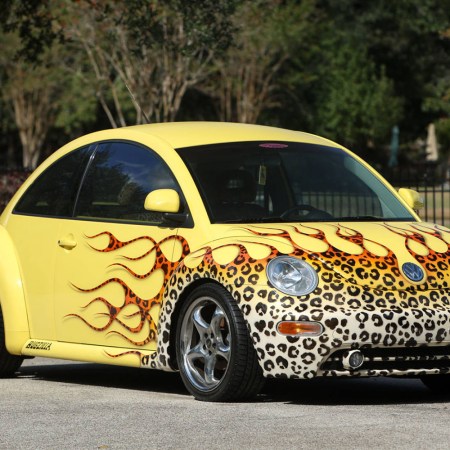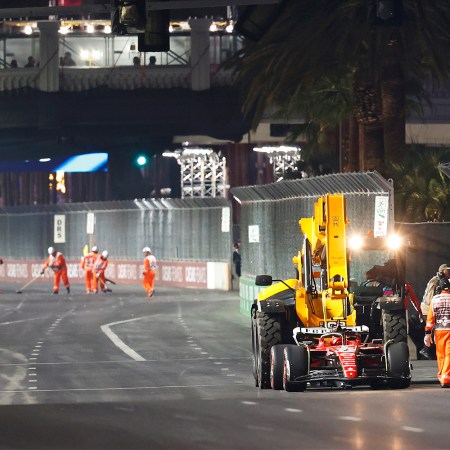The Indy 500, the Monaco Grand Prix and 24 Hours of Le Mans.
Together, they represent the Triple Crown of Motorsport. Only one, though, is so arduous as to merit an attribution — or disclaimer — to its duration.
Le Mans is roughly six times longer than Indy, and eighteen times longer than a Formula 1 Grand Prix. The goal: to lap the 8.5-mile track as many times as possible in a single 24-hour period. If the Grand Prix of Endurance and Efficiency sounds dull, a Mercedes CLR triple backflip begs to differ. So does 2016’s quadruple amputee driver.
This weekend marks its 84th running. Over the decades, the oldest endurance race in motorsports has involved one wild ride after another — here are five you should know.
Ford’s Vendetta Against Ferrari
1966
Henry Ford II lost millions when Enzo Ferrari crawfished out a deal to sell Ferrari. So he sought revenge at Le Mans, where Italian stallions had won five consecutive years.
Enter Carroll Shelby, fellow outspoken Ferrari hater.
Before Le Mans ’66, Shelby and his team of auto Poindexters frantically redesigned Ford’s GT40 MkI, a Le Mans loser the previous year. They taped yarn on the car to study airflow efficiency, added weight-loss tweaks like magnesium wheels and replaced the 4.2-liter V8 with a 7.0-liter.
The day of reckoning saw GT40s take the podium — all three tiers of it. Ferrari hasn’t won Le Mans since.
Jacky Ickx Walks The Talk
1969
Before 1970, drivers began Le Mans by running across the track, jumping behind the wheel and vrooming past others (potentially still on the track). Seatbelts unbuckled. Doors agape.
Protesting in defense of better safety regulations, Ickx began ’69 with a dangerously casual walk to his GT40. He then belted up meticulously before starting well behind the 44-car pack.
Then he won the race … but not before the unbuckled John Woolfe died on the first lap when flung from his Porsche 917. Rules changed the next year to start drivers seated. The legendary Belgian went on to capture six Le Mans titles.
Raining Cats And Underdogs
1995
Part of Le Mans’ appeal: multiple car classes. Each gets its own winner, but the fastest class usually wins overall. Usually.
Overnight rains aided 1995’s production-based McLaren F1 GTR to victory over speedier prototypes. Weather had cooled JJ Lehto’s McLaren’s fragile gearbox but forced Courage’s heavily favored C34 prototype to tiptoe around corners.
Treacherously spearheading his corners throughout the night, Lehto’s luck (and skill) brought Finland and McLaren their first Le Mans victory in one of racing history’s greatest drives.
Porsche’s Consortia Of Champions Begins
1970
Le Mans’ winningest team didn’t taste gold until the 38th competition. Taste? Devour.
Porsche honored Woolfe’s death by winning all four classes in 1970. The overall champ, Hans Herrmann and Richard Attwood’s 917k, won by five laps. A loud introduction to Porsche’s 17 championships in the years since.
Audi Will Have A Guinness, Please
2010
With a record average speed of 140 mph, Audi’s R15+ TDI set another Le Mans record in 2010: distance. 5,410.7 km. That’s 397 laps, 3,362 miles. New York to LA then back to Phoenix in one day. Audis placed first, second and third that day.
They’ve won 12 of the last 16 races.
Main image courtesy of Le Mans
This article was featured in the InsideHook newsletter. Sign up now.























